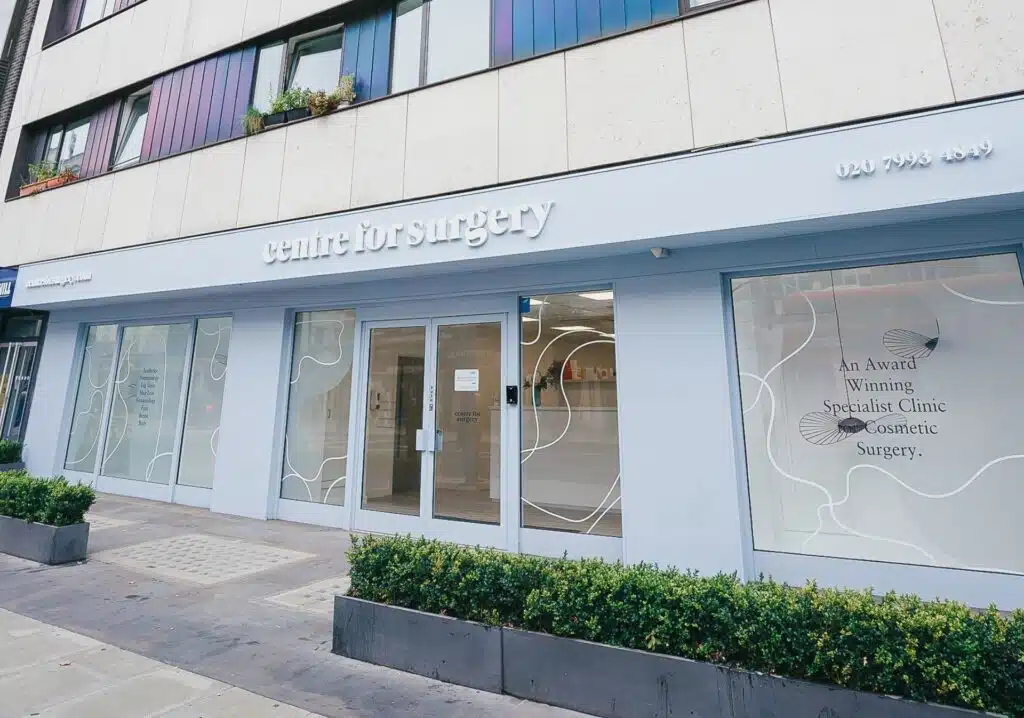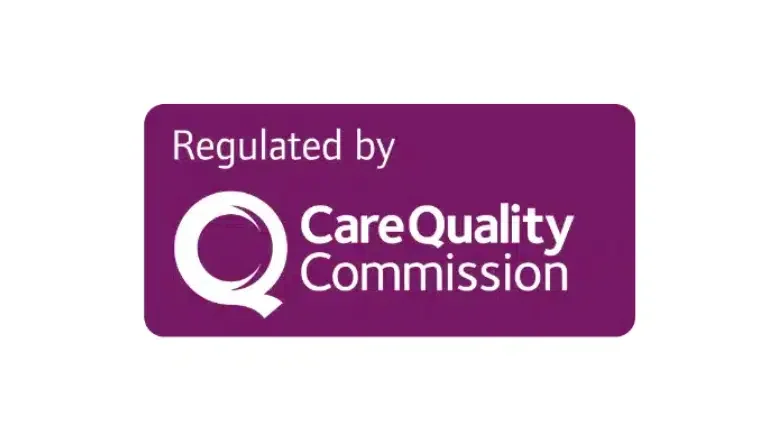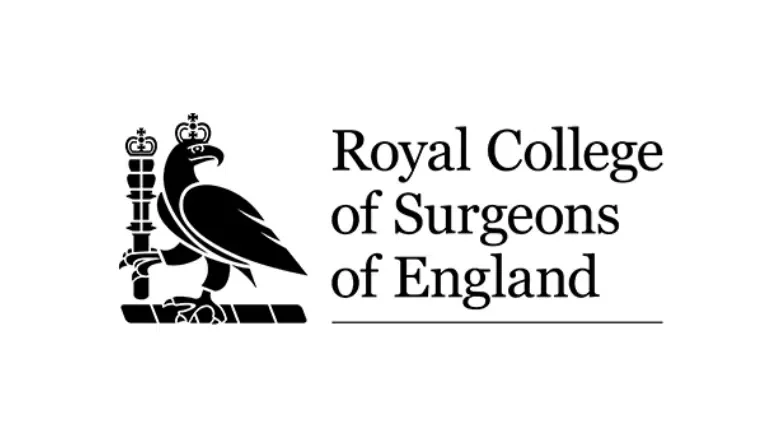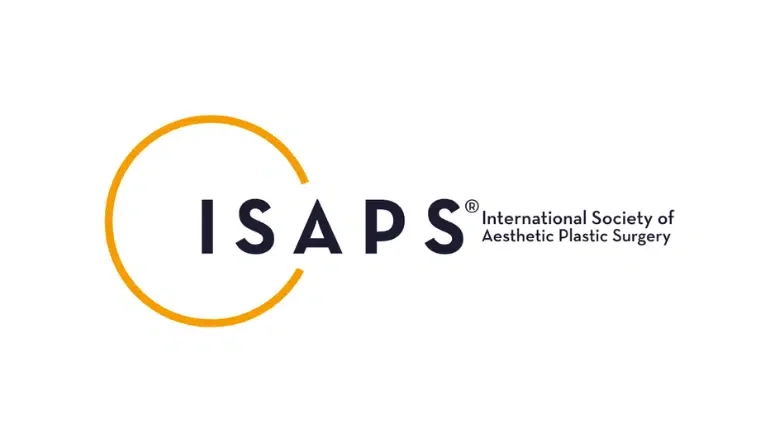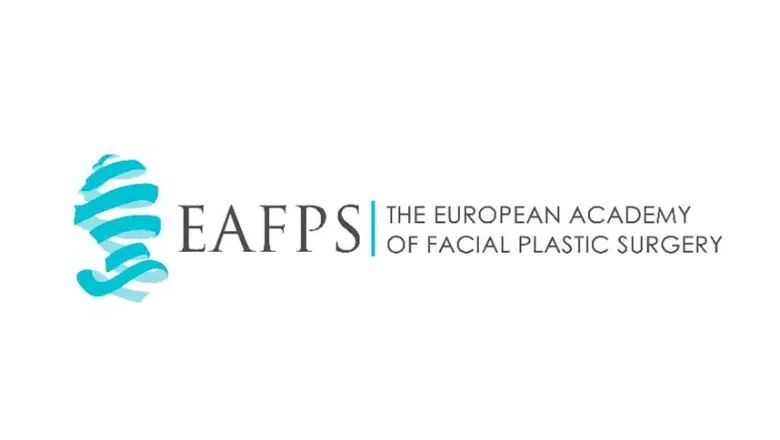Some individuals may feel a lack of confidence or become particularly self-aware due to having an unusually large forehead or a high hairline, which can be due to hereditary factors. This issue is not gender-specific, as it can impact both males and females. Fortunately, for those who are troubled by the size of their forehead, there are effective treatments available at Centre for Surgery. One of the options worth considering is discussing with a qualified surgeon the possibility of undergoing forehead reduction surgery, also known as hairline lowering surgery.
The phrase “forehead reduction surgery” encompasses a variety of cosmetic surgical techniques aimed at reducing the area of the forehead. Specifically, the procedure aims to decrease the space between a person’s eyebrows and where their hair begins to grow. It is important to recognise that every individual’s circumstances are different, and as such, the approach to surgery will be custom-tailored to their specific needs. For some, the surgical plan may include a brow lift — a procedure that elevates the eyebrows to a more aesthetically pleasing position. For others, it may involve adjusting the scalp that bears hair to a lower position on the forehead. This type of surgery requires detailed planning and a bespoke approach to ensure that the results align with the individual’s aesthetic goals and the natural proportions of their face.
Benefits of Forehead Reduction Surgery
Forehead reduction surgery, a form of cosmetic surgery, brings several advantages for patients concerned about the widening space between their hairline and eyebrows. As the forehead expands, it may disrupt the facial symmetry and proportions, potentially impacting a person’s confidence and how they feel about their appearance.
The main purpose of hairline-lowering surgery is to enhance the harmony of one’s facial features. When conducted with precision and by a surgeon with considerable expertise, the outcome is an improved balance in facial proportions, giving the face a more pleasing and symmetrical look.
Often, a receding hairline can be the result of hair thinning or loss, leading many to believe that hair restoration surgery is the most effective course of action. Although hair restoration does provide a solution, forehead reduction surgery can offer a quicker and more impactful improvement. Hair transplant procedures generally do not achieve the same level of density in the affected area as can be achieved through forehead reduction surgery.
RELATED: How Long Does Forehead Reduction Surgery Last?
Furthermore, forehead reduction surgery can simultaneously address other concerns. The procedure is effective in decreasing the gap between the brows and the hairline and can diminish the appearance of lines and wrinkles on the forehead. Both horizontal lines and the vertical lines that can appear between the brows—often referred to as ‘frown lines’—can be softened. This is especially true if the forehead reduction surgery is combined with a brow lift, which can further enhance the smoothing effect on forehead creases, resulting in a more youthful and refreshed appearance.
RELATED: How to Get Rid of Frown Lines and Forehead Wrinkles
Determining Suitability for Forehead Reduction Surgery
Forehead reduction, or hairline lowering surgery, often combined with a brow lift, is designed for individuals aiming to achieve a more harmonious facial appearance, perhaps seeking a more youthful look. If you find yourself concerned about the prominence of your forehead or if its size and shape leave you feeling less confident, a consultation with a cosmetic surgeon could provide valuable insights into potential solutions.
Typically, this procedure is a popular choice among women, especially those without a genetic predisposition to hair loss. The reason for this is straightforward: to ensure the longevity of the surgical results. Men are certainly candidates for this treatment as well; however, the best outcomes are seen in those who are not experiencing significant hair loss.
To be considered an ideal candidate for forehead reduction surgery, you might typically be expected to:
- Possess a relatively high forehead.
- Have good scalp elasticity, which allows for the necessary movement of the hair-bearing scalp.
- Not exhibit signs of hair thinning or ongoing hair loss.
The procedure is not only effective in altering facial proportions for a more aesthetically pleasing look but also in boosting self-esteem by providing lasting outcomes. Ideal candidates are often those observing the early signs of ageing who wish to mitigate the appearance of wrinkles and fine lines alongside repositioning the hairline for a rejuvenated appearance.
Additionally, hairline lowering surgery serves as a transformative step for transgender individuals transitioning from male to female. It aids in sculpting a more traditionally feminine hairline and is frequently one component of a broader facial feminisation surgery plan, which might include procedures such as brow bone reduction.
Preparing for Hairline Lowering Surgery
Preparing for hairline lowering surgery is an essential step to ensure the best possible outcome and reduce the risk of complications. Here are some general guidelines that most surgeons will advise their patients to follow:
- Smoking Cessation: Nicotine can constrict blood vessels and impair blood flow, which is crucial for healing. Patients are usually advised to quit smoking at least 4 to 6 weeks before the surgery and remain smoke-free during the recovery period to facilitate better healing.
- Medication Management: Certain medications and supplements can increase bleeding risk, such as aspirin, non-steroidal anti-inflammatory drugs (NSAIDs), and some herbal supplements. It’s important to discuss all medications and supplements with your surgeon, as they might recommend stopping or adjusting these two weeks before the surgery.
- Alcohol Restriction: Alcohol can also increase bleeding risk, so it’s typically advised to limit alcohol consumption for at least a week before the surgery and during the recovery period.
- Nutritional Considerations: A balanced diet rich in vitamins and minerals supports healing. Some surgeons may recommend increasing intake of certain nutrients, like vitamin C, to promote tissue repair. However, vitamin E, which can be found in multivitamins, sometimes needs to be avoided as it can contribute to bleeding.
- Hydration: Being well-hydrated is beneficial for recovery, so it’s important to drink plenty of water in the days before the surgery.
- Pre-operative Testing: Your surgeon may request blood tests or other medical evaluations to ensure that you are fit for surgery.
- Transportation and Aftercare Arrangements: Since you’ll be under anaesthesia, plan to have someone available to drive you home post-surgery. You may also need someone to stay with you for at least the first night after the procedure.
- Post-surgery Needs: Prepare your home for your return after the surgery with easy-to-reach essentials, comfortable pillows for elevation, and if recommended by your surgeon, ice packs for swelling.
- Skincare: Avoid any harsh skincare treatments or products before surgery, as they may irritate the skin.
- Hair Care: Do not have any chemical hair treatments, such as colouring for at least two weeks before the surgery.
The Forehead Reduction Surgery Process: A Detailed Overview
Forehead reduction surgery, also known in the medical field as hairline lowering surgery, is a relatively straightforward cosmetic operation that can be undertaken as a single procedure or in conjunction with additional aesthetic treatments. It is not uncommon for patients to opt for both hairline lowering and a brow lift in one session, as the two procedures complement each other well, addressing different aspects of the forehead and brow region.
Typically, this procedure is completed within a few hours, and the patient remains under general anaesthesia throughout, ensuring comfort and the absence of any pain during the surgery. Prior to the commencement of the actual surgery, the surgeon carefully outlines the planned adjustments directly on the skin. Using a surgical pen, the surgeon marks the patient’s forehead and scalp, delineating the new hairline’s position and ensuring precision during the incision and repositioning of the skin.
Once the surgical planning is complete, the surgeon makes a precise incision at the marked area. The next step involves delicately loosening the tissues beneath the skin, allowing the section of the scalp that bears hair to be shifted towards the desired new position. Depending on the individual patient’s anatomical requirements and aesthetic goals, the scalp can be advanced by approximately 1 to 3 centimetres.
The process continues with removing any redundant skin that may result from the advancement of the hair-bearing scalp. To complete the procedure, the incision is meticulously closed. This often involves at least two layers of sutures, ensuring the newly positioned hairline is secure and that the incision heals optimally, with a focus on minimising any potential scarring.
In certain cases, where the patient’s scalp lacks the necessary flexibility or elasticity for the desired degree of advancement, an additional step may be incorporated into the treatment plan. A device known as a tissue expander may be implanted beneath the scalp. This expander is typically left in place for a period of around six weeks, during which it gradually stretches the skin. Following this preparatory phase, a second surgical appointment is arranged, during which the surgeon will remove the tissue expander and finalise the forehead reduction, achieving the pre-determined cosmetic enhancement.
Postoperative Recovery from Forehead Reduction Surgery: What You Should Know
Recovery experiences from forehead reduction surgery vary significantly from individual to individual, influenced by the particular technique utilised during the operation and personal healing rates. Generally, the initial recovery phase from this cosmetic procedure spans approximately one week, after which most patients can resume their usual daily routines. It is important, however, to schedule this downtime to allow for the reduction of any swelling and bruising that may occur post-operation.
Typically, patients are in a position to leave the clinic without the need for a surgical head dressing as soon as the day after the procedure. When it’s time to return to work or educational settings, it’s quite standard to wear a headband or a cap to discreetly conceal the healing site. In some instances, patients may also choose to style their hair forward to cover the stitches.
Surgeons will offer a variety of recommendations to facilitate a smooth and effective recovery:
- Pain Management: Post-operative pain is usually managed with prescribed medication during the initial days following the surgery. Once the course of prescribed pain relief is completed, over-the-counter analgesics can be taken if necessary.
- Sleeping Arrangements: To minimise swelling and bruising, it is advisable to keep your head in an elevated position, even while sleeping. Utilising multiple pillows to prop up your head, or resting in a recliner that keeps the upper body raised, can be very beneficial.
- Incision Care: Proper care of the incision site is paramount to prevent infection. Adhering to the surgeon’s cleaning instructions is critical, as is remaining vigilant for any signs of infection and communicating with your surgeon if concerns arise.
While a return to most normal activities is anticipated after a week, engaging in vigorous physical exercise or heavy lifting should be avoided until the incision is fully healed. The scar from the surgery typically begins to diminish within three months, during which time patients may prefer to conceal it or opt for hairstyles that provide coverage.
Temporary numbness around the scar is not uncommon, with some patients experiencing this sensation for 4 to 6 months post-surgery. This numbness generally diminishes over time as the nerves regenerate. Patients should be prepared for this part of the healing process and understand that it is usually a transient condition.
Arranging Follow-Up Appointments After Your Cosmetic Procedure
After your forehead reduction surgery, it’s essential to attend several follow-up visits with your surgeon to ensure that your recovery is progressing as expected. One of the key reasons for these post-operative appointments is the removal of sutures, which is typically done around 1 to 2 weeks after the procedure.
Furthermore, you’ll be scheduled for a routine post-operative examination between 2 to 4 weeks after the surgery. This visit allows the surgeon to assess the healing process, check for any signs of complications, and provide additional care instructions tailored to your recovery needs.
In the uncommon event that you experience complications, it may be necessary to have more frequent follow-up appointments. Your surgeon will advise you on the specific post-operative care plan and schedule any additional visits to ensure you receive the appropriate treatment and support throughout your recovery period. These personalised recommendations are vital for achieving the best possible outcome and for your overall well-being post-surgery.
Understanding the Potential Risks of Hairline Reduction Surgery
Hairline reduction surgery, much like any surgical intervention, carries its set of inherent risks and possible complications. Nonetheless, selecting a surgeon who is both experienced and has a credible reputation can significantly diminish these risks.
For the majority of individuals, this type of surgery is deemed relatively safe. Still, it’s important to be aware of and consider potential side effects such as:
- Scarring: While incisions are typically placed along the hairline to be less visible, some form of scarring is inevitable.
- Bleeding: Some bleeding is normal during and shortly after surgery, but excessive bleeding can be a risk.
- Numbness: A loss of sensation in the treated area can occur, usually temporarily.
- Swelling and Bruising: Common after surgery, these symptoms generally subside within a few weeks.
- Asymmetry: There is a risk that the hairline may not be perfectly symmetrical post-surgery.
- Discomfort: Some pain and discomfort are expected after surgery but can be managed with medication.
- Hair Loss: There may be temporary or, in rare cases, permanent hair loss at or near the incision site.
- Infection: As with any surgery, there is a potential for infection at the incision site.
Adherence to post-operative care guidelines is crucial in reducing these side effects and achieving optimal results. Patients are usually provided with detailed aftercare instructions to support their recovery process.
In addition to the direct surgical risks, there are also considerations related to anaesthesia. General anaesthesia, while typically safe, can cause side effects and complications in some individuals, ranging from mild nausea to more serious, albeit rare, conditions. Local anaesthesia can also trigger reactions or allergies in certain cases.
Achieving Long Lasting Results with Hairline Lowering Surgery
Hairline lowering surgery, or forehead reduction, is indeed a procedure that can offer enduring results, potentially lasting throughout a person’s life. The longevity of the surgery’s outcomes largely depends on the skill and expertise of the surgeon performing the procedure, as well as the individual circumstances of the patient.
To secure such long-term results, the surgery must be considered an investment not just financially but in terms of the careful planning and decision-making that goes into the process:
- Selecting the Right Surgeon: Choosing a highly experienced and reputable cosmetic surgeon specialising in hairline lowering surgery is crucial. They can ensure the procedure is performed with precision and care, which is essential for lasting results.
- Addressing Hair Loss: For individuals with a tendency toward hair loss, it’s important to have a candid discussion with a surgeon about the likelihood of continued hair loss and how it might impact the results. Surgeons may advise against this surgery if significant ongoing hair loss is likely because as the hair loss progresses, it could expose the scar and raise the hairline once again, undermining the benefits of the initial surgery.
- Alternative Treatments: If hair loss is a concern, other options may exist. These could range from medical treatments to manage hair loss to combining hairline lowering with hair transplant surgery, which can fill in the hairline and help maintain the surgery’s results.
- Preventative Care: For those who are good candidates and proceed with surgery, ongoing care is essential. Protecting the scalp and hair from sun damage, avoiding harsh chemicals, and maintaining a healthy diet can all contribute to the health of the scalp and longevity of the results.
- Follow-Up Treatments: In some cases, additional treatments may be recommended down the line to preserve the hairline position or to address any hair thinning that occurs due to ageing.
Combining a Brow Lift with Hairline Lowering Surgery: Enhancing Facial Harmony
When considering cosmetic enhancements for facial rejuvenation or reshaping, the goal is often to achieve a more harmonious and proportionate appearance. Hairline lowering surgery, while primarily focused on reducing the height of the forehead, can be effectively complemented by a brow lift for several aesthetic and functional reasons:
- Balanced Proportions: A high forehead can sometimes overshadow other facial features. By lowering the hairline and lifting the brows, surgeons can create a more proportionate distance between the features, enhancing overall facial balance.
- Rejuvenation: A brow lift addresses signs of ageing in the upper face, such as drooping eyebrows and forehead wrinkles. When combined with hairline lowering, the entire upper face can appear more youthful.
- Symmetry: Asymmetry in brow height can be corrected during a brow lift, further improving facial symmetry which is often a key aspect of perceived attractiveness.
- Enhanced Eyelid Appearance: Sagging brows can contribute to a hooded look over the eyes. By repositioning the brows, not only is the forehead shortened, but the eyes can appear more open and engaging, potentially reducing the need for an eyelid lift.
- Refined Results: The dual approach of a brow lift with hairline lowering can lead to more subtle and natural-looking results, as the improvements extend across a larger portion of the face rather than isolating a single area.
- Functional Benefits: For some patients, a brow lift is not just cosmetic but also functional, as it can alleviate the heaviness over the eyes that might impair vision.
- Maintenance and Enhancement: Following recovery, treatments such as wrinkle-relaxing injections can prolong the effects of the surgery. In addition, skin resurfacing techniques can further refine skin texture and tone, complementing the surgical results.
- Customised Approach: Each patient’s anatomy and aesthetic goals are unique, so combining procedures allows for a customised approach that addresses multiple concerns in a single intervention, meaning less overall recovery time compared to separate procedures.
How Does Forehead Reduction Surgery Cost?
The cost of forehead reduction surgery can vary significantly depending on various factors. Here are some of the aspects that can affect the overall price:
- Surgeon’s Expertise: Surgeons with extensive experience or a high-profile clientele may charge more for their services.
- Complexity of the Procedure: If the procedure is more complex or combined with other cosmetic surgeries like a brow lift, the costs will be higher.
- Surgical Facility Fees: The choice of the facility and whether the procedure is performed in a hospital or a private surgical suite can affect the cost.
- Anaesthesia Fees: The type and duration of anaesthesia can affect the cost, as well as the fees of the anesthesiologist.
- Medical Tests and Post-surgery Garments: Any pre-operative testing, post-operative garments, or additional medical supplies will add to the cost.
- Follow-up Appointments: The number of post-operative visits and their inclusion in the surgery cost can vary.
- Medications: Any prescriptions for pain relief or antibiotics to prevent infection will be additional costs.
Discussing all these factors with your surgeon during the consultation is important to get an accurate estimate. Additionally, enquire about the payment and financing options they may offer. Centre for Surgery partners with Chrysalis Finance to provide patients with payment plans that make the cost more manageable over time, including 0% APR.
RELATED: How Much Does Hairline Lowering Surgery Cost?
Creating a Tailored Approach for Your Forehead Reduction Surgery
At Centre for Surgery, we firmly believe there’s no universal fix when it comes to cosmetic surgery – and that’s certainly the case with forehead reduction procedures. We understand that the unique contours and characteristics of your face need an equally unique approach. That’s why our expert facial plastic surgeons dedicate time to conduct an in-depth analysis of your facial structure. This allows us to tailor a surgical plan that’s not only bespoke to your features but also aligns seamlessly with your vision for your appearance. Our primary objective is to enhance your forehead in a way that brings balance to your face, complementing your eyes and overall facial shape to leave you with a look that’s both natural and aesthetically pleasing.
Your individual preferences and aspirations are pivotal to the process. In your consultation, we endeavour to delve deep into what you envisage for your outcome. To aid this, we welcome you to share visual inspirations or examples – photos or images that capture the essence of the look you’re drawn to and those you aren’t fond of. These discussions about your aesthetic inclinations are key for our surgeons to sketch out the perfect surgical plan that aligns with your personal objectives.
But we don’t stop there. We must consider a broad spectrum of factors, including a comprehensive review of your medical and family history and an evaluation of your current physical anatomy. This meticulous approach ensures that we set goals that are not just desirable but also attainable.
When contemplating a bespoke surgical plan, we factor in various elements such as your age, emotional state, and the realistic expectations you have for the surgery. It’s paramount for you to harbour achievable aspirations regarding the surgery’s results. While it’s true that the changes post-surgery can be transformative, often taking years off your appearance, we always aim for results that look untouched and genuinely yours. Our surgeons will engage in a candid discussion with you about what can realistically be achieved, ensuring that the final outcome doesn’t just meet your expectations but is also true to your inherent natural beauty.
Forehead Reduction Surgery at Centre for Surgery: Patient-Centred Excellence
At Centre for Surgery, we pride ourselves on our commitment to patient-focused care and bespoke cosmetic solutions. Our renowned clinic in the heart of London is synonymous with excellence in forehead reduction surgery, offering state-of-the-art techniques to ensure natural-looking results that harmonise with your intrinsic facial features.
Patient Testimonials:
“After years of feeling self-conscious about my high forehead, the team at Centre for Surgery gave me the confidence boost I needed. The attention to detail and personalised care were outstanding. I felt understood and supported from the first consultation through to my post-operative care.” – Emily R.
“Choosing Centre for Surgery for my hairline lowering procedure was the best decision I’ve ever made. The results have been life-changing. The surgeons are true artists, and the staff made sure I felt comfortable every step of the way.” – Sophia L.
“The level of professionalism and compassion I experienced at Centre for Surgery was unparalleled. My concerns were allayed from the get-go, and the outcome of my surgery was beyond my expectations. A heartfelt thank you to the entire team.” – James K.
Book Your Consultation:
Discover a new chapter of confidence with our forehead reduction surgery tailored just for you. To schedule a consultation and discuss your aesthetic goals with our experts, please reach out to us:
📞 Phone: 0207 993 4849 📧 Email: contact@centreforsurgery.com 📍 Address: 95-97 Baker Street, London W1U 6RN
For a deeper understanding of our patient-first philosophy, visit our About Us page.
Finance Options:
We believe that financial considerations should not be an obstacle to your self-confidence. Explore our range of finance options, including 0% APR with Chrysalis Finance, to find a plan that suits your budget.
Expand Your Knowledge:
Delve into our plastic surgery blog for more insights and information on various procedures, patient stories, and recovery tips.
Your Questions Answered:
Got queries? Our comprehensive Clinic FAQs provide answers to common questions about cosmetic surgery and what to expect.
Visit Our Baker Street Clinic:
Experience world-class care at our Baker Street clinic, where comfort meets cutting-edge technology. Learn more about the facilities and services offered at our Baker Street clinic.
Embark on your journey to a more balanced and confident you with Centre for Surgery – where your well-being is our top priority.

